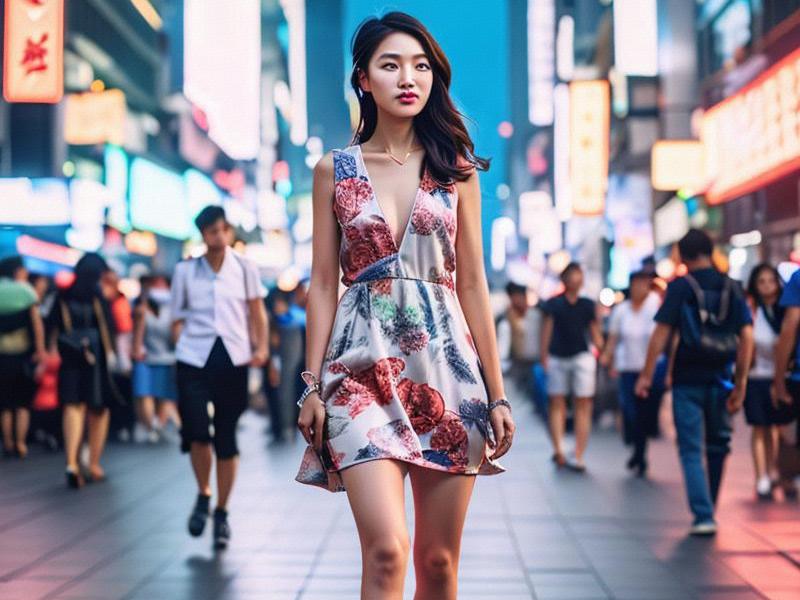This article delves into the unique and multifaceted concept of "Shanghai beauties," exploring their historical evolution, cultural significance, and the factors that contribute to their enduring allure. Through a blend of historical analysis and contemporary observation, we aim to unravel the mystery behind these captivating women of Shanghai.

Shanghai, a city that has long been synonymous with elegance, sophistication, and modernity, is not just a place on the map but a living, breathing entity that has witnessed the ebb and flow of history. Among its many facets, one of the most intriguing is the phenomenon of "Shanghai beauties." These women, who have graced the city's stages and streets for over a century, embody a unique blend of beauty, charm, and resilience that has captivated the hearts of many.
The concept of "Shanghai beauties" is not merely about physical appearance; it is a cultural and historical phenomenon that reflects the city's evolution and its people's aspirations. In the early 20th century, Shanghai was known as the "Paris of the East," a cosmopolitan hub where Eastern and Western cultures converged. It was during this period that the image of the "Shanghai beauty" began to take shape.
These women were often seen as the epitome of modernity, embodying a blend of traditional Chinese grace and Western sophistication. They were educated, independent, and fashion-forward, characteristics that set them apart from their contemporaries in other parts of China. The "Shanghai beauty" was not just a woman; she was a symbol of progress and change.
One of the key factors that contributed to the emergence of the "Shanghai beauty" was the city's unique position as a gateway to the West. Shanghai's status as a major port city allowed it to absorb and integrate Western culture, fashion, and lifestyle. This cultural exchange was reflected in the way women dressed, behaved, and carried themselves. They embraced Western fashion trends, such as qipao (cheongsam) tailored to flatter the figure, paired with high heels and accessories, creating a look that was both elegant and modern.
上海贵族宝贝龙凤楼
The "Shanghai beauty" was also defined by her intellectual and professional pursuits. Unlike women in other parts of China, who were often confined to traditional roles, Shanghai women had greater access to education and employment opportunities. Many of them became professionals, such as doctors, teachers, and journalists, and played active roles in the city's social and political life. This independence and empowerment were reflected in their confident demeanor and assertive personalities.
The allure of the "Shanghai beauty" was not limited to her physical appearance or professional achievements; it was also deeply rooted in the cultural and artistic traditions of the city. Shanghai has long been a center for literature, art, and entertainment, and its women have played a significant role in shaping these fields. From the famous actresses of the Shanghai film industry to the writers and poets of the "New Culture Movement," these women used their talents to express themselves and challenge societal norms.
The "Shanghai beauty" was not just a product of her environment; she was also a shaper of it. Her influence extended beyond the city's borders, as Shanghai's culture and fashion trends spread to other parts of China and beyond. The "Shanghai beauty" became a symbol of modernity and progress, inspiring women across the country to embrace change and assert their independence.
上海喝茶群vx
However, the concept of the "Shanghai beauty" has not remained static; it has evolved over time, reflecting the changing dynamics of the city and its people. In the post-World War II era, Shanghai's status as a global city began to decline, and the image of the "Shanghai beauty" also underwent a transformation. The rise of the People's Republic of China in 1949 brought about significant social and political changes, and the traditional notions of beauty and femininity were challenged.
During the Cultural Revolution, the emphasis on equality and collectivism led to a rejection of individualism and Western influences. The "Shanghai beauty," with her focus on fashion, independence, and intellectual pursuits, was seen as a symbol of the old regime and fell out of favor. The city's women were expected to conform to the new ideals of socialist womanhood, which emphasized modesty, hard work, and devotion to the collective.
Despite these challenges, the spirit of the "Shanghai beauty" endured. In the改革开放新时代 (new era of reform and opening up, or "Reform and Opening Up"), which began in the late 1970s, Shanghai experienced a resurgence of economic and cultural vitality. The city once again became a hub of innovation and creativity, and the image of the "Shanghai beauty" was reinvigorated.
爱上海419
In the modern era, the "Shanghai beauty" continues to embody a unique blend of tradition and modernity. She is confident, independent, and fashion-forward, but she also values family, community, and cultural heritage. The "Shanghai beauty" is not just a woman; she is a symbol of the city's resilience and adaptability, a testament to its ability to embrace change while preserving its essence.
The enduring allure of the "Shanghai beauty" lies in her complexity and multifaceted nature. She is a reflection of the city's history, culture, and aspirations, a living embodiment of Shanghai's unique identity. Whether she is a fashion icon, a professional, or an artist, the "Shanghai beauty" continues to captivate and inspire, a symbol of the city's enduring charm and vitality.
In conclusion, the "Shanghai beauty" is not just a physical or cultural phenomenon; she is a symbol of Shanghai's history, culture, and aspirations. Her enduring allure lies in her ability to adapt and evolve, reflecting the changing dynamics of the city and its people. The "Shanghai beauty" is a testament to the city's resilience and adaptability, a living embodiment of Shanghai's unique identity and charm.